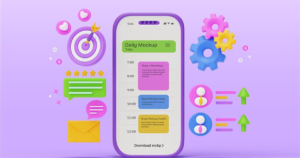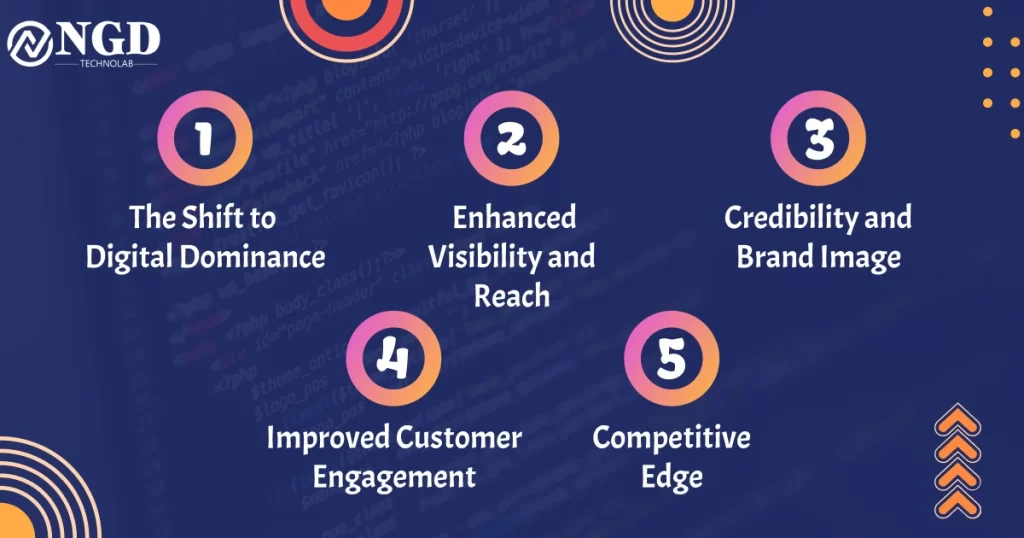Simplifying App Development with Low-Code and No-Code Platforms
-
 Prashant Padmani
Prashant Padmani

Get Free consultation and let us know about your custom web and Mobile App project idea

Over 14+ years of work experience, we have built 210+ web and mobile apps
We can help you with
- Dedicated Developer
- delivering high-quality development
- Custom Mobile App Development
- Innovative Solution For Startups and Enterprise
In today’s fast-paced digital world, businesses and individuals are constantly looking for ways to streamline processes, improve efficiency, and stay ahead of the competition. Significant advancements have been made in app development, traditionally requiring a team of skilled developers to spend countless hours writing complex code. However, the emergence of low-code and no-code platforms has revolutionized the app development landscape, making it more accessible to a wider audience than ever before.
Understanding Low-Code and No-Code Development
Low-code platforms are tools that allow users to create applications with minimal coding knowledge. These platforms provide a user-friendly interface where components can be dragged and dropped to design the app’s layout and functionality. While some coding skills may be beneficial, they are not always necessary, as the platforms offer pre-built modules and templates that can be customized to suit specific requirements.
No-code platforms take simplicity a step further by enabling users to build fully functional applications without writing a single line of code. These platforms rely entirely on visual interfaces and simple configurations, allowing users to design and deploy apps quickly and easily. No-code platforms are particularly popular among entrepreneurs, small businesses, and individuals with limited technical expertise.
How Low-Code and No-Code Platforms Work
Both low-code and no-code platforms utilize a drag-and-drop interface, making it intuitive for users to design their apps. Components such as buttons, forms, and menus can be selected from a library and placed onto the app’s canvas, allowing for easy customization and arrangement.
Many low-code and no-code platforms offer pre-built templates for common types of applications, such as e-commerce stores, customer relationship management systems, and task management tools. These templates serve as a starting point for users, enabling them to quickly launch their apps with minimal effort.
Integration capabilities are a key feature of low-code and no-code platforms. Users can easily connect their apps to external services and databases, allowing for seamless data exchange and functionality. This simplifies the process of adding features such as payment processing, email automation, and user authentication.
Automation is another powerful feature of low-code and no-code platforms. Users can set up workflows and triggers to automate repetitive tasks, such as sending notifications, updating records, or generating reports. This not only saves time but also reduces the risk of human error.
Benefits of Low-Code and No-Code Development
One of the primary benefits of low-code and no-code development is its accessibility. These platforms democratize app development by allowing anyone, regardless of technical expertise, to create their own applications. This empowers entrepreneurs, small businesses, and individuals to bring their ideas to life without the need for extensive coding knowledge.
Low-code and no-code development significantly accelerate the app development process. With pre-built components, templates, and automation features, users can create and deploy apps in a fraction of the time it would take with traditional development methods. This agility is particularly valuable in today’s fast-paced business environment, where rapid iteration and deployment are essential for success.
Traditional app development can be costly, requiring investment in skilled developers, infrastructure, and ongoing maintenance. Low-code and no-code platforms offer a cost-effective alternative, as they reduce the need for extensive development resources and can be used by smaller teams or even individuals. This makes app development more accessible to businesses of all sizes and budgets.
By lowering the barriers to entry for app development, low-code and no-code platforms foster innovation and creativity. Entrepreneurs and businesses can quickly prototype and test new ideas without the need for extensive resources or technical expertise. This encourages experimentation and allows for the rapid iteration of concepts, ultimately driving innovation in the digital space.
Examples of Low-Code and No-Code Platforms
- AppSheet: A no-code platform acquired by Google, AppSheet allows users to create custom mobile and web apps using simple configurations and data sources.
Bubble: A no-code platform that enables users to design and launch web applications without writing code. Bubble offers a range of features, including database integration, user authentication, and API connections.
OutSystems: A low-code platform designed for enterprise-level app development. OutSystems offers robust features for building, deploying, and managing complex applications, making it suitable for large organizations with specific requirements.
WordPress: While primarily known as a content management system (CMS) for websites, WordPress also offers a range of plugins and themes that allow users to create custom web applications without writing code.
Conclusion
Low-code and no-code development platforms have transformed the app development landscape, making it more accessible, efficient, and cost-effective than ever before. By simplifying the development process and empowering users with intuitive interfaces and pre-built components, these platforms enable businesses and individuals to create custom applications to meet their unique needs and challenges. As technology continues to evolve, low-code and no-code platforms will play an increasingly important role in driving innovation and democratizing app development for years to come.
Frequently Asked Questions
Low-code and no-code development are approaches to app development that aim to simplify the process by reducing the amount of traditional coding required. Low-code platforms require minimal coding knowledge, while no-code platforms allow users to build fully functional applications without writing any code at all.
Low-code and no-code platforms are suitable for a wide range of users, including entrepreneurs, small businesses, individuals with limited technical expertise, and even larger organizations looking to streamline their development processes. These platforms empower users to create custom applications to solve their unique challenges without the need for extensive coding knowledge or resources.
While low-code and no-code platforms may not offer the same level of customization and flexibility as traditional coding methods, they provide a wide range of features and capabilities to meet the needs of most users. These platforms often include pre-built components, templates, and integrations, allowing users to create fully functional applications for various purposes.
Yes, low-code and no-code platforms are capable of handling complex applications, although the level of complexity may vary depending on the platform and the user’s expertise. Many platforms offer advanced features such as database integration, automation, and API connections, allowing users to build sophisticated applications without writing extensive code.
Some of the key advantages of using low-code and no-code platforms include increased accessibility, faster development times, cost-effectiveness, and the ability to foster innovation. These platforms empower users to create custom applications quickly and efficiently, allowing them to focus on solving problems and driving business growth without getting bogged down in technical details.
While low-code and no-code platforms offer many benefits, they may not be suitable for every use case. Some limitations and drawbacks to consider include potential constraints on customization, reliance on platform-specific features, and scalability issues for larger or more complex applications. Additionally, users may encounter challenges with integration, data security, and platform support.
Latest Blogs
Explore the Latest Blogs on Trends and Technology.





